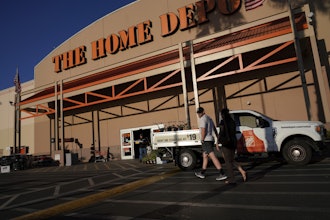“Location, Location, Location” is a familiar mantra in the world of real estate, but it is also an important factor when it comes to inventory. The goal of every organization is to have the right inventory in the right place at the right time. Many companies make significant investments in software to determine how much inventory should be on the shelves at any given time, based on sophisticated algorithms and data inputs. Unfortunately, having the best system doesn’t necessarily provide the best results. There are several outside influences that interfere with optimizing inventory levels.
Boosting Sales Goals
If replenishment is done right, your product will occupy prime retail space when the consumer wants it, rather than sitting on a shelf at the back of the clearance section. Take home entertainment products for example.
When a new DVD, CD or video game is scheduled for release, software will use historical data combined with algorithms to forecast demand for a given time period. The system may predict that 500,000 units are needed to meet demand in a specified region.
However, at the same time, the sales team has been given a goal to meet — usually based more on revenue generation than any statistical model — and so they will go to the area retailers to create interest in the new release. Sales will invariably increase the volume of product in the region to meet their quota, for example selling 2 million units of this newly released item. In turn, the demand planning team will then issue replication orders to meet the artificial demand of two million units, providing at least the quantity sold in by the sales team and typically adding their own safety stock of 10 or 20 percent of the total.
Next is the replenishment team who will be given the sell in quantities by the retailer. Instead of using the results of their software solution to determine how much product should be distributed to each location, they are forced to distribute the sold in quantities. Often, they will knowingly put too much product into many or all of the retail locations. This ultimately creates a situation where 30-40 percent of the sold in quantity ends up as a return to the distribution point and added to the safety stock already in the warehouse. The result is a glut of product that sits in the warehouse for long periods of time, potentially sold into retail at huge discounts and ending up in the bargain bins or never being sold back into retail and eventually being destroyed.
Applying Minimum Requirements
Additionally, manufacturers may impose minimum quantities to gain economies of scale and maximize production, which may not coincide with product demand. While the forecast may determine that 100 units will meet the projected demand, the plant may have a minimum manufacturing order of 1,000 units, causing the supplier to determine whether to forego potential sales based on expected consumer demand or agree to manufacturing the 1,000-unit minimum, potentially leaving 900 units in the warehouse that may never sell.
Warehousing may also contribute to the problem with minimum pick requirements. In order to optimize efficiency, distribution might require that a replenishment order meet a minimum quantity or impose a premium cost to pick small orders. Once more, replenishment analysts are faced with potentially forgoing sales based on their software forecasting models or agree to shipping additional quantities to meet the minimums. Either case ends with incurring additional costs or reducing projected margins.
Addressing These Challenges
These are only a few of the outside influences that can undermine the best demand planning and replenishment software available to suppliers.
When the demand forecast and inventory replenishment are not in sync, the company faces a great deal of unnecessary costs. If sales people are incentivized based on net sold at their respective customer, they may be less inclined to sell in excess product as the returns would have a negative effect on their commissions.
Similarly, if production and distribution are better educated on use of the demand planning and replenishment tools, as well as incentivized to maintain just in time inventory and tying up less capital, they may be more willing to use the recommendations of the software solution.
Retail analysts within the organization also should be familiarized with the profitability of their accounts. These analysts should take all the additional costs associated with over shipping product into consideration. They should also have incentives to balance in stock rates with actual sell through.
From manufacturing decisions to meeting consumer demand, the more aligned each department is the better chance there is of reaching the ultimate goal of improving the company’s overall profitability.
Kevin Plets is director of Vision, an inventory management solution, at Aptean.



















